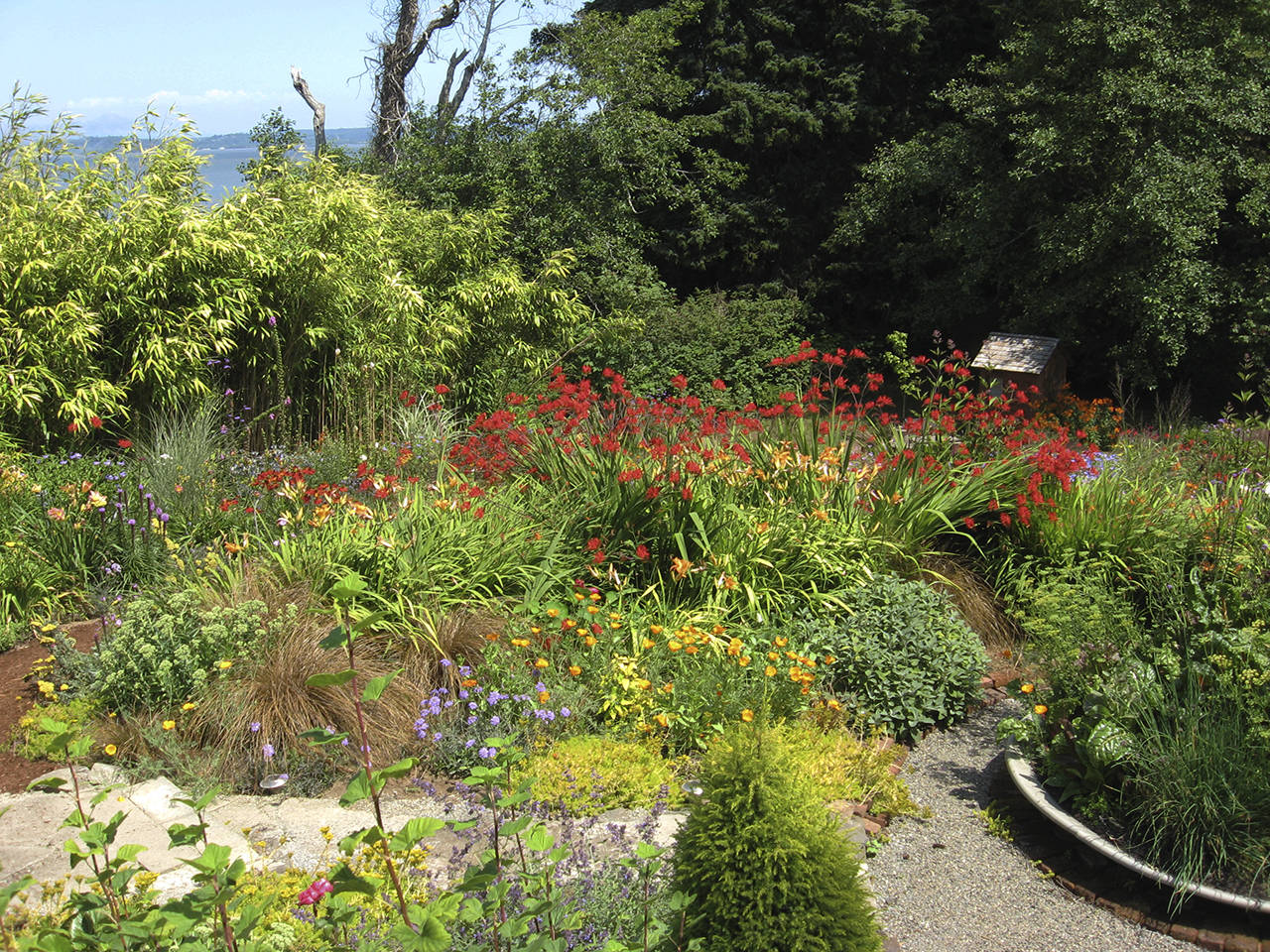“As young gardeners, we are enchanted with zinnias and marigolds. They last only one summer, but that satisfies us — until we discover that there are other flowers that don’t have to be planted year after year. These flowers appear on their own every year. These flowers appear — perennially.”
— garden writer Marty Wingate
Perennials are soft-stemmed plants that live for more than three years. They are very valuable in the garden and play a major role, as most of them are relatively cheap, grow quickly and can be increased easily. Like trees and shrubs, some perennials may live for many years. In addition, most of them are herbaceous, as they have soft stems that die back in the fall and grow again the following spring.
Since perennials are a permanent addition to the garden, you must select where you place them with great care. When planning your border or flowerbed, choose a location that gets plenty of sunshine and is well-drained. Begin in the spring; turn the soil over to a depth of 9 to 10 inches. Mix in organic material such as compost and enrich the soil so that its pH is between 6.0 and 6.8.
Herbaceous perennials may be used in a variety of ways. If space exists, whole borders or beds may be developed with them. An open, sunny position is best, since this environment will work for the majority of plants.
Most herbaceous plants flower for only three or four weeks each year; so, to stay interesting, plants with different flowering periods must be chosen. As a rule, taller plants should be placed at the back of the border, with the shorter ones in front or around the edge.
Many plants will suit a sunny border and a well-drained, slightly alkaline soil. Among the taller varieties are phlox, hollyhock, mallow, bee balm, coneflowers, upright fuchsias (which may even be used as hedges), coreopsis and lavender. Some of the beautiful shorter perennials are bellflowers, asters, lady’s mantle, pinks, hardy geraniums and coral bells.
Don’t forget the perennial grasses. These come in a wide variety of colors, textures and heights.
One thing you must keep reminding yourself is that plants will grow. Just when you think all your plants are in perfect proportion to one another, they go and grow up on you. Pretty soon, everything looks overcrowded. What do I do? Divide it. Move it.
When choosing perennials, it’s also important to consider blooming time, flower color, foliage, light requirements and which plants grow best in our area. It’s fortunate that most of our gardens include so many different microclimates and soil conditions that we can find a place for a wide range of plants. Remember, a tall maple tree can provide enough shade to allow you to plant that favorite shade-loving hosta underneath. This past spring, we took down a mock orange tree. The sunshine poured in, and we are now able to plant the coreopsis we love so much.
There’s no denying that most of us go to a nursery, fall in love with a plant, plop down our money, and then takr it home and try to find a spot for it. Eventually maybe I’ll get to the point where I begin choosing plants by matching how their characteristics will fit in my garden.
Every garden needs perennial evergreen shrubs and small trees. Why? Because they add variety in color and texture. They allow you to have something to add interest to your winter garden after all those herbaceous perennials die back. A few possibilities are barberry, skimmia, daphnes, camellias, and yellow- and red-twig dogwood.
Don’t hesitate to ask a staff person at your favorite nursery for help. Most are extremely knowledgeable. If a plant doesn’t work where it is planted — either because it is not doing well or you decide you don’t like the color of the flowers or the foliage — move it! Don’t be afraid to experiment with different plant combinations.
Kathy Eko, who lives south of Elma, has been a WSU Master Gardener since 2010.


